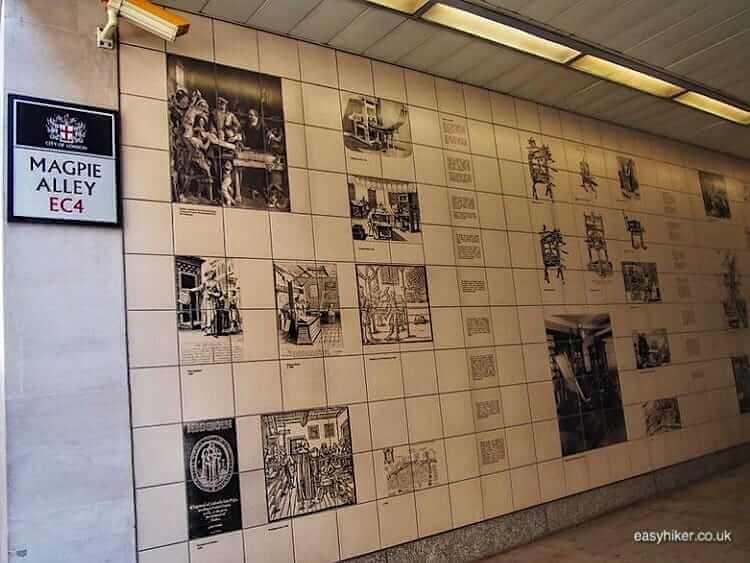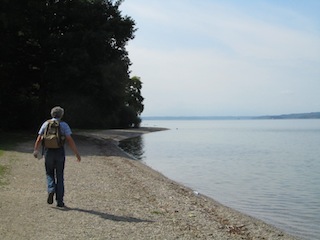Italy was the birthplace of the tourism industry. For the 500 years since the invention of the “Grand Tour” by English aristocrats, foreign visitors have flocked to Italy in ever-increasing numbers to sing the praises of the country in any language and any medium at hand, from painting and poetry to TV programmes and Instagram.
As a consequence, there are no longer any unknown treasures or secrets-to-discover in Italy, and there is no destination where you would be the first or indeed the only tourist at any given time. If you want to explore what no or at most a few people before you have ever seen, do not bother to come.
On the other hand, there is a type discovery that can still be made: discoveries not of previously unknown but of little-known places, of destinations whose charms and delights have so far, for a variety of reasons, been under-appreciated by the wider public.
After all, not all of Italy has been subject to over-exposure for centuries. There is a marked difference of degree in our over-familiarity with the country.
On one end of the scale, you will have Saint Mark’s Square in Venice and Florence’s Palazzo Vecchio. On the other, the Sacri Monti or Sacred Mountains in the southern foothills of the Alps.

These Sacred Mountains are half pilgrimage trails, half the Disney Worlds of the 16th century. Following the fall of Constantinople in 1453 and the gradual tightening of the Muslim dominance over the entire Middle East, it became increasingly difficult to visit the Holy Land.
As a solution, the Catholic Church in Italy decided to recreate the experience of such a pilgrimage on home soil.
Architecture …,

… scenic views over the landscape, …

… and dramatic recreations of scenes from the bible …

… were all applied to lift the spirit of the faithful – and to provide them with excitement.
Nine such Sacro Monte pilgrimage paths were designed between 1486 and 1712, all in the same corner of Italy: eastern Piemonte and western Lombardy. Some bishops at the time were more enthusiastic about the concept than others and none more so than Carlo and Federico Borromeo, the powerful Cardinals of Milan. The Sacred Mountains are therefore clustered on their home turf.
The Sacre Monte of Varese

… is a fairly representative member of the group. It consists of 14 chapels which line a 2.5 km long route to the Sanctuary Church of Santa Maria del Monte.
Although the chapels of the Sacre Monte of Varese were all built in the same style, none is quite like any of the others: variation is generated by the different ways they have been embedded in the scenic views and the changing angles of approach.
Some chapels are reached on a winding path and you will only see them at the very last moment after turning a corner, while others are approached in a straight line from a greater distance.

The chapels and the Sanctuary Church are divided into three groups of five, which represent the so-called joyful, sorrowful and glorious mysteries of the Rosary, the overarching narrative.
Each of these three groups of “mysteries” – with scenes from the early life of Jesus and the Virgin Mary, the passion of Christ and the ascension respectively – is opened by a separate stone gate, presumably as an aide memoire for the ancient pilgrims, reminding them of where in the narrative they were.

Inside the chapels of Sacre Monte of Varese, scenes from the Bible are recreated in a highly accentuated dramatic style, merging sculpture – the colourful statues are made from fired clay – and scene painting for an immersive experience: the 16th century’s version of virtual reality.

On top of that, the pilgrimage itself is staged like a drama: while the way towards the chapel is slowly but continuously winding upwards, the Sanctuary Church, the ultimate destination of the journey, occasionally pops into view, a promise of heavenly bliss.

After about two hours of leisurely strolling up the hill – the original pilgrims would have taken much longer, stopping at every chapel for prayers and meditation – the final ascent to the Sanctuary Church chapel begins.

The Santuario on top of the Sacred Mountain actually predates the trail that leads to it: chapels and churches had stood in this spot for centuries – according to legend or tradition, St Ambrose of Milan celebrated the eucharist here to thank God for his victory against pagan heresies – when the current church was constructed in 1472.
And unlike the trail, which has not changed much since its creation in the early 1600s, new elements are still added to the interiors and the exteriors of the church – such as the bronze statue of Pope Paul VI which was cast by Floriano Bodini in 1984.

The small village that was built around the church must have been a buzzing place in the 17th century, like today full of restaurants and shops.
Even the vegetation serves to set the village apart from the more sombre atmosphere of the pilgrimage trail, suggesting a lush sub-tropical oasis.

The trail of Santa Maria del Monte lies some kilometres to the north of Varese’s town centre, but the Line C buses can take you there in a few minutes.
Buy your tickets at a booth opposite the train station (on the far side of the street) and then proceed to the near-by Piazetta Fratelli Kennedy where you find the nearest stop.
But watch out: normally, the buses will take you to the entrance of the complex, but on days when the funicular railway that goes up to the hilltop is closed, the buses continue all the way up to the Sanctuary Church.
Unless you get off the bus in time, you will then have to do the walk in reverse order. If you prefer to do the walk in the order the 17th century architects intended you to take, you must be on your guard and leave the bus at the lower station of the funicolare. So keep your eyes open.
The nine Sacri Monti of Piemonte and Lombardy were named a World Heritage Site by UNESCO in 2003. Varese was the second of these Sacred Mountains that we visited, after our trip to Domodossola a few years back, and it will certainly not have been the last.
So watch this space for more.







